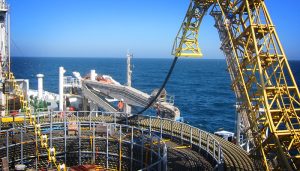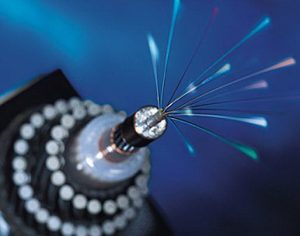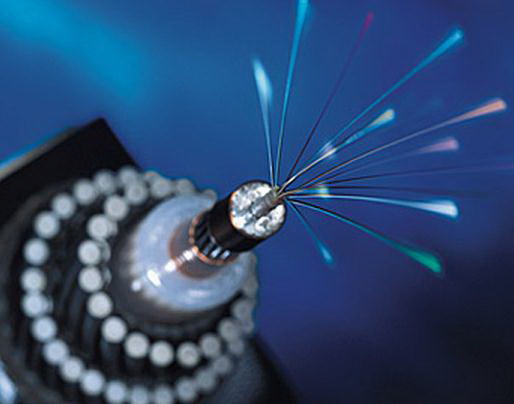The UK has long been a leader in the development of the submarine cable industry. And as the topic of environmental protection has been gaining attention in recent years, various industries are competing to make outstanding contributions to the protection of the environment in their respective fields.
This is also true in the cable industry.
To achieve a decarbonized society, the introduction of renewable energy sources and the interconnection of national and regional lines are being promoted worldwide.
In the European market, where this trend is active, the demand for power cables is growing substantially.
The UK, in particular, is expected to be one of the largest markets for power cables.
This is because the country is planning several offshore wind power projects to achieve the Scottish government’s net-zero emissions by 2045 and the UK’s net-zero emissions by 2050.
Construction of High-Voltage DC Submarine Cables
In 2019, Sumitomo Electric supplied a high-voltage direct current (HVDC) cross-linked polyethylene insulated (XLPE) submarine cable system for the UK-Belgium interconnection (NEMO Link) and completed its installation.
Even today, the 400 kV HVDC XLPE cable system remains the highest voltage in the industry in commercial operation. This superior technology has enabled Sumitomo Electric to win several contracts in the global market. Including projects connecting the UK and Ireland (Greenlink Interconnector) and Germany (Corridor A-Nord).
Regarding high-voltage DC cables, the ZMS cable manufacturer has the following insights.

The future power grid will develop in the direction of large capacity, long distance, high economic efficiency, high reliability, and low environmental impact. While the development of distributed energy, the delivery of offshore wind power, and the development of island resources will also rely closely on DC cables for power transmission.
Therefore, the research and development of high-voltage DC cables is particularly important and will be of great benefit.
High-voltage DC Cable Uses and Advantages
Compared with the AC transmission system, the DC transmission system has the advantages of large transmission capacity and long transmission distance. And the DC transmission system power regulation is fast and flexible. The risk of chain failure in a wide range is low, and the system operation is more reliable.
As an important part of the DC transmission system, HVDC cables are widely used for grid-connected wind power, and island power supply. And long-distance transmission across the sea.
Research shows that in cable projects with transmission distances greater than 40 km, HVDC cables have cost advantages. And the longer the distance, the more obvious the advantage.
As one of the key pieces of equipment in DC transmission, the safe operation of HVDC cables is crucial to the stability of the high-voltage transmission network.
DC cables are divided into wrapped insulated cables and extruded insulated cables. Extruded DC cables currently mainly use polyethylene as the insulation medium.
Polyethylene cables with strong and simple internal structures and easy production and installation have received a lot of attention in the recent past. At present, all indicators of extruded DC cables are better than gum-impregnated solid cables.
So, the construction of high-voltage DC cables is very helpful for the output of electricity.
The cable company also has a previous track record of supplying power cables for offshore wind projects around the world, including the UK, Germany, Taiwan, and Korea. And Japan’s first commercial offshore wind farms in Akita and Noshiro.
Based on these achievements, the company decided to establish a facility in the Scottish Highlands, UK, to capture the growing demand for high-end cables in the region.
The new company will supply cables for offshore wind farms and further grid connections. Which are essential for introducing renewable energy into the country’s electricity transmission system.
With local production, stable supply, and long-term operation and maintenance services in the UK and other European markets, Sumitomo Electric will be able to meet customer needs and strengthen its presence in these markets.
Comments from the People Involved
“We are delighted to be working with the Cabinet Secretary to establish a state-of-the-art submarine cable plant in Scotland. Sumitomo Electric is a technology leader in this industry, with a 100-year history of submarine cable production, a strong track record, and a high level of quality. Sumitomo Electric has the technology needed to develop a green society and will work with the Scottish and UK governments and other stakeholders on future offshore wind power and interconnection projects in the region,” said Osamu Inoue, president, and chief operating officer of Sumitomo Electric.
“I am very pleased that Sumitomo Electric is coming to Scotland. This significant announcement demonstrates the strength of investor confidence in our vision of a net-zero economy. Sumitomo Electric has a proven track record in renewable energy technologies, which will be invaluable in supporting Scotland’s fast-growing offshore wind sector, with Scottish Wind aiming to deliver over 27 GW of generation capacity. The Scottish Government, Scottish Development International, and Highlands and Islands Enterprise will continue to work closely with Sumitomo Electric to promote this important partnership and unlock the opportunities presented by the global renewable energy revolution,” said Neil Gray, Scotland’s Cabinet Secretary for the Welfare Economy, Fair Work and Energy.

Key Future Research for High-Voltage DC Cables
The main properties of DC cable insulation materials include electrical conductivity, thermal conductivity, mechanical and space charge properties, and environmental friendliness.
How to regulate the various properties of cable insulation materials is a long-standing challenge for domestic and foreign scholars to solve.
The development of extruded DC cables needs to address two key scientific issues: generation, transport, and accumulation. And dissipation of space charge in the medium under the action of multi-field coupling and the synergistic regulation of multiple properties of the insulating medium.
The main future research contents include:
Cables Under the Action of Multi-Field Coupling
The changing laws of space charge generation, transport, and accumulation. And dissipation in the solid insulating medium under the action of multi-field coupling in the steady-state and transient processes and their interaction processes with conductivity. The relaxation characteristics of space charge during polarity reversal. And the influence laws of nano-inorganic particles and nano-fibers on space charge injection and suppression. And the characteristics of the influence on insulation aging characteristics.
Nanocomposites
1 The mechanism of regulation of space charge, internal electric field, and thermal field distribution and the regulation method of this material.
2 Study the interfacial structure of nanoparticles designed to change the physicochemical environment of nanoparticles.
① Such as chemical functional groups on the surface of the particles, nanoparticles, and polymer matrix to change the interactions.
② The modulation effect of the physicochemical environment of nanoparticles on the electric field distribution and thermal field distribution inside the composite insulating medium.
3 The law of the effect of nanowire array structure in solid insulating media on the electric and thermal fields of the media.
4 and the physicochemical laws and methods for the coordinated regulation of multiple properties.
Aspects of Insulation Systems within DC Cables
The generation, development, and evolution of defects within the cable system, as well as the characterization parameters of insulation aging and defect states. To obtain the effect of nano-doping on the long-term operating characteristics of extruded DC cables through research.
Establishment of Suitable Material Systems
To establish a green matrix material system for high-voltage DC cable insulation. And to achieve synergistic and optimal regulation of the electric and thermal fields of the new insulation matrix material under high-voltage DC through the addition of inorganic nanoparticles.
Solve the basic problem of producing extruded super and extra high voltage DC plastic cables.
